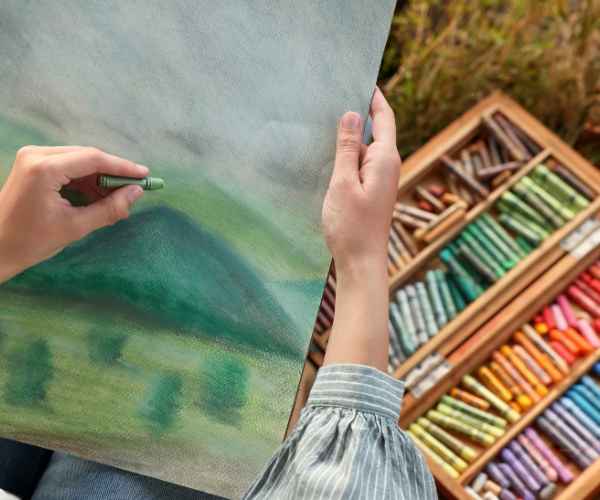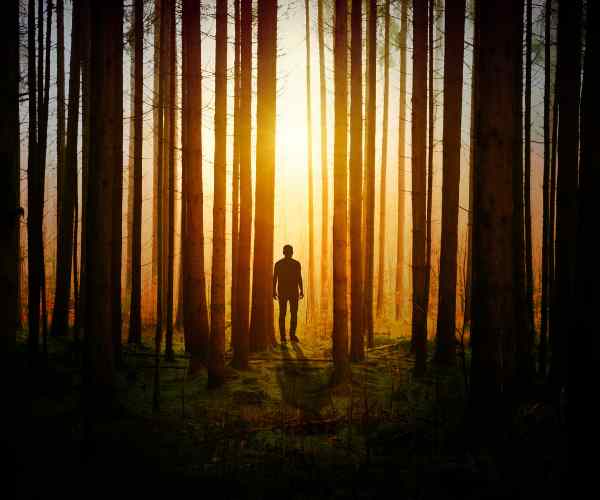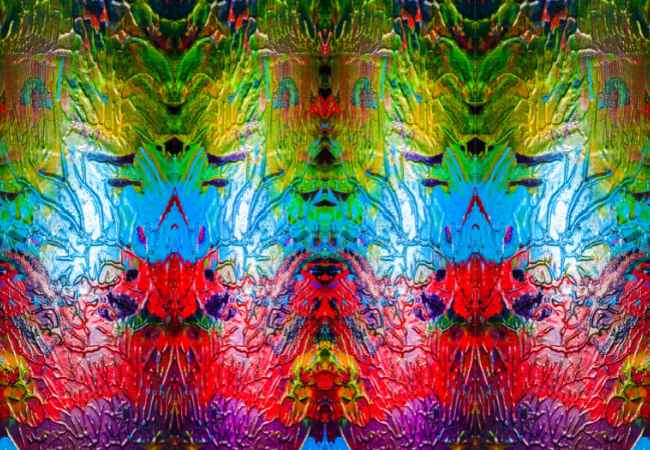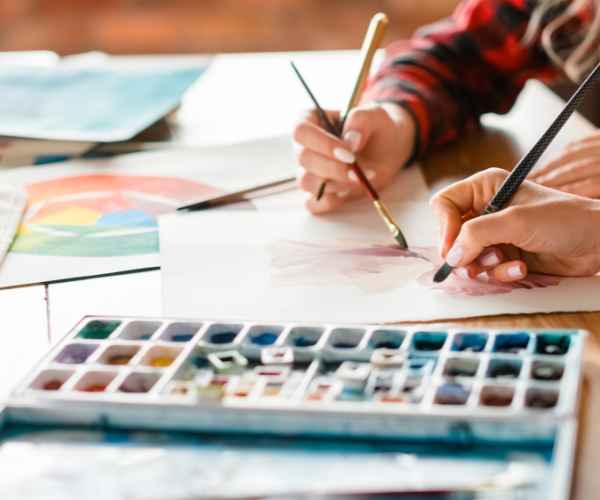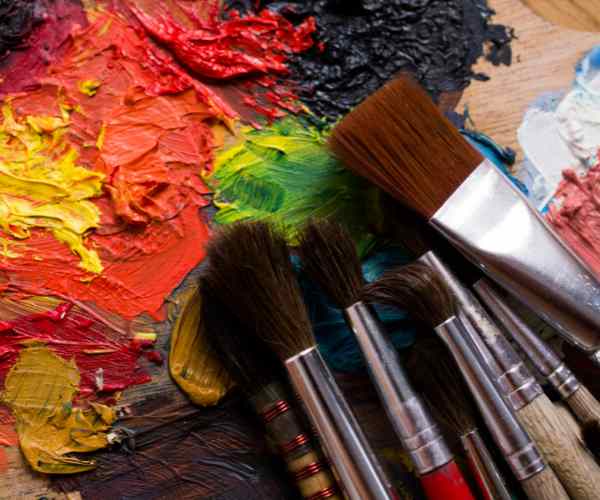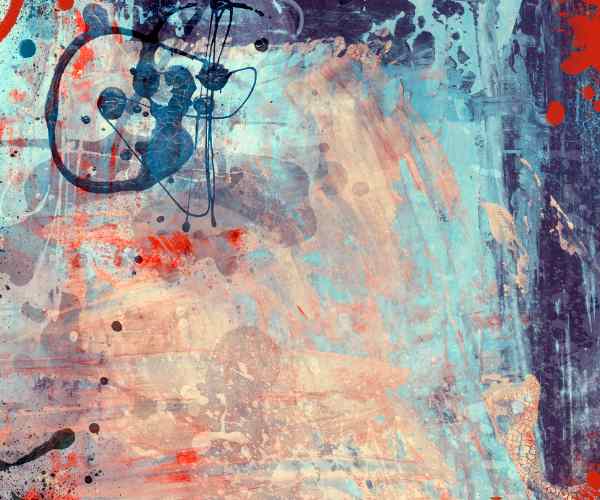Wondering how to achieve pro-level realistic reflection painting? Then this article is for you.
When I painted reflections for the first time, it was like entering a new perspective of the world. Reflections are omnipresent. Try to recall the last time you saw the glint of the sunlight on a body of water or how a window reflects the clouds in the sky. Such moments seem like one is freezing time within time, and adding that particular detail to your paintings is such a huge enhancement in making it appear alive. However, I do exactly lie, painting reflections is quite complex in itself with no established starting point.
Reflections can be somewhat tricky, and they are also quite tricky. Theoretically, reflections, as a whole, are simply reproductions of their surroundings, so it seems that they should be easy to paint. Incorrect. There are numerous elements that interact with reflections: light, the surface, the angle of view, and so on. In fact, my underlying issue was that I had lost the sense of “observing” things and started to capture exclusively what I thought existed. But as I began painting details from the world around me rather than just trying to paint, everything changed remarkably.
The guide is meant to show off a couple of the techniques, tools, and insider tips I have learned over the years. Trust me, once you get the hang of it, you will wonder how you ever painted without an understanding of reflections, for the guide helps explain that process. This is the important part: you will acquire the skill of how to add light realism to your own work and how to artistically interact with reflective surfaces. Together, we will evaluate how light interacts with various surfaces such as water, glass, and metal. By the end of the guide, you will be able to give your work a new level of realism.
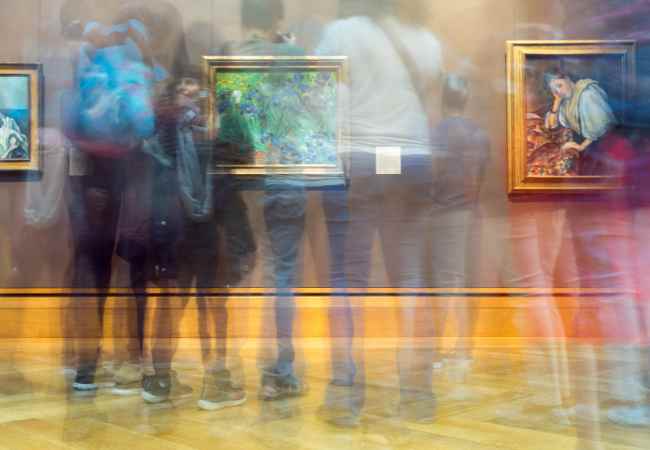
How to Paint realistic reflections on water, glass, and metal surfaces
Okay, first things first: working with a light source. Painting reflections is all about focusing on light. This brings us to the problem every artist faces; if it is a still lake, an object that is made of shiny metal or even a piece of glass, each of them reflect light in a different way.
Consider water. The diffusion of light is noticeable if you’ve come across sunset reflections sitting on the surface of a still lake, where light is well diffused and spread throughout. Now, contrast that with the surface of a chrome car. Metal cuts light into sharp edges leaving no blur. Everything appears sharper and more defined. It seems as if light is more constructed on metal mediums and water surfaces reflect light in a loose and fluid manner.
Before I give my tips, let me say this – the start of every painting shouldn’t include a brush, at least for you artists out there. Ask yourself a couple of questions like: are you painting a still lake or a river? Is the surface made of glass and if yes, is it frosted? Surface suitability is important as it determines how light would behave and ultimately the painting.
In fact, at the very beginning of my learning, I used to walk around with a camera taking pictures of reflections. I would photograph the rainy puddles or the reflection of the skyline on a glass wall. These enabled me to observe the invisible differences in the way light hits a particular surface. Nowadays, for instance, you will view a glass of a building and rather than see it as a flat glass pane that reflects the image. It modifies the image slightly depending however on the circumference of the glass. Water has the same effect: ripples, wind and depth change the look of a reflection.
Pro-Tip: If possible visit any water body like a river or a lake at different times during the day. It is interesting how the light changes from morning to evening. Reflections for instance are crisp and stand out due to the large amount of contrast of the light and shadow around in the early hours of a day. But when it is midday, the reflection is not as prominent and almost blends into the surface as it is so soft. Learning how to see those subtle changes is an excellent way to develop your eye skills and reflection painting techniques. It is particularly useful to focus on such details that could have been missed looking at the reflection such as the displacement caused by a gentle breeze.
What gives the painting depth perception is this reflection of the light. To render reflections that are both vivid and realistic it is important to comprehend the interplay between a light and a surface, This says that it is not solely about imitating what you visually please, but rather it is about portraying the architecture that intertwines light and surface together in order to make that reflection.
Dive in the Surface and Reflection
While rendering painting reflections, it is paramount to amalgamate the two elements, in this case the surface and the reflection, as two unique components that exist together in an enthralling manner.
Envision this if you will. You are enjoying a relaxing day at the Lake, a boat can be seen grazing at the top of the water on the surface which isn’t glassy but has the ideal amount of waves. On close inspection, you are able to notice how the boat’s reflection changes with each wave. If you glance down, the boat might look a bit smudged but the top looks clearly outlined. In combination together which might look like confusion creates an illusion, a simmer of a dance of reality and a twist of fiction or imagination.
Implication and significance are two aspects which are intertwined and in essence define this layer cake concept. The water’s surface interacts with light, which results in your added perspective to the add a complete new depth to the painting, There are times when the reflection originates from the object itself, and the object is never fully depicted correctly, but in most cases, it has its own personality owing to the waves moving in the water.
Let me recount a personal experience: There was a day I tried to photograph the reflection of a canoe, it was rather a breezy day. I was annoyed since the reflection kept changing due to the wind creating ripples on the water. This told me that instead of trying to create a perfect version of something, I should learn to accept those distortions. It enabled me to as of now see things in the form of those two layers: the solid physical canoe Location above Water and the rotating liquid location below Water. By doing them separately, I was able to animate both layers to make it more fascinating and realistic.
Choose the Correct Brushes for Realism
The brush you want to use can either make or break your painting of reflection.
Consider: If you want to portray the delicate smooth surface of glass, for example, why would you use a stiff bristly brush that would spoil those smooth lines? Routine soft brushes are ideal for glass. This is because they give you sharp clean edges that would look like light bouncing off that shiny surface.
Conversely, if you are painting for example, water and you want to depict its fluidity and texture, a more textured brush can help complement the illusion of movement. I’ve found my most favorite techniques developing by experimenting with my different brushes, for example, there was a certain time I found a fan brush while painting a river scene and it enabled me to simulate soft waves and ripples in water, making it appear real. To put colors right into context While the reflections in water may appear to be accurate mirror images, they are in fact not.
Pro Tip: Have a go at glazing techniques! This enables you to apply transparent washes or paints in layers to increase depth gradually. It’s excellent for reflections because you can easily alter the color and texture of your painting so that it looks more chic and with depth.
Let’s talk about color now. The other aspect to remember is that not all reflections are simply a reversed image which does distort colors as per the light, surroundings and even the texture of the surface do.
Have you ever experienced the colors of a sunset reflected on a lake? It can sometimes seem more satisfying than seeing the colors illuminated in the sky. This is because, under certain circumstances, the superior reflection of colors is possible owing to the interaction of light with the water’s surface. This is to say that water is a better “amplifier”. When you’re working with painting reflections, keep an eye out for those colors. They may not appear to be as they are in space.
And when you call a subject to paint, glance at its colors. If you’re trying to capture a scene where there are green treetops against the background of a sunny blue sky, try to imagine those colors on water’s surface. Some or even all the colors might need to be reduced in saturation or altered in tone in order to not exceed what the surface is able to adequately reflect.
Pro Tip: Consider this while painting water reflections, deep waters typically reflect dark muted colors whereas shallow water reflects bright colors. That is a lesson I learnt late in a painting workshop. I was attempting to paint the picture of a shallow stream, and, while I intended to keep the colors looking more bright and lively, the image instead used the muted earthy tones of the water that reconciled the picture. What a game changer that was!
Understanding how light falls on objects and how color gets used in images will help you to improve in painting. You will not only begin to copy what you observe but also aim to convey an emotional and physical aspect of the painting in a way that the audience understands.
FAQs: Knowing how you can replicate realistic paintings
What has gone wrong with my reflection to make it appear to be flat?
This is the flat reflection – the one which every artist must have came across once in their life which is noteworthy.
The outcome is not as layered and dimensional as you would anticipate it to be in times when you can visualize exactly what you wish to create. The reason is deeply embedded in the way we tend to both image and depict light and shadow. Reflection is all about contrast, and if you’re not careful about the relationship between light and surfaces, that flatness will begin to appear.
When learning how to make reflections, I remember struggling with painting them myself. There’s this particular piece that I painted which is called Water Lillies and I remember it giving me quite a tough challenge. The actual water lilies looked so much more vibrant and lively outside the water, but the water conceals their reflection into quite the blurry looking image. There was one thing that never crossed my mind until much later. It was much easier to understand how best to observe the scene’s structure. Then, with sufficient watching, that resulted in understanding how sunlight disperses into shadows and highlights. With the yellow painting and contrasts I was starting to create, those reflections started to become much more striking and lifelike.
There can be times when you may find yourself staring blankly at a reflection that is flat and lifeless, however in these situations I would recommend you pause for a second, analyze the shadow and the highlights, and re envision where the light source is. Applying extra layers of shade and contrast to the picture you are painting will make all the difference as those minor yet distinct design changes will give that extra detail. If there was one thing I am confident of, it is that doing this can change how most people envision your work
Replicating the water’s reflection on a piece of paper always felt like an easy yet complex work to me. Put simply, make a water reflection appear true is an easy but challenging endeavor. For this, however Expect a bit more than repeating the image present on top of the water surface.
Creating a feeling of motion and a feeling of fluidity is quite admirable. During my first attempt to paint the lake, I learned that the only way to capture its brilliance was through the blending of colors in a seamless way. Recall how, in water, colors merge, for example; there is seldom a sharp edge.
Assume the task is to depict a lake during sunset, in this case, while the sun is shining down, start with orange and yellow hues. Once that is done, let that blend into deeper shades of blue green where the deeper ends of the water body is concerned. More attention also needs to be paid to the texture of the water: distortions such as ripples should be used.
One day, I stand next to a pond, and I see the gentle wind producing soft ripples. If I remember correctly always, I drew several sketches, trying to represent how blurriness of the contours was shifting colors. This exercise taught me that a ripple is a distortion and because it is out of the ordinary, the perception of the reflection changed.
So, while painting, don’t hesitate to work with those gentle transitions. Notice the tiny color and texture changes throughout the piece. Your painting will appreciate you for it!
Can I apply these techniques for glass and metal capture as well?
Of course, glass and metal capture techniques can be done but with certain conditions being applied.
Both materials are good at light reflection, but they do so in different ways. Glass often appears to have a soft, more opaque quality. You will want to emphasize soft multidisciplinary highlights and soft reflections. In my opinion, glass especially requires attention when she is being painted because she acts as a lens distorting everything behind her.
On the other hand, metal is not opaque and has a direct light reflection with certain edges. There are great contrast edges which have more undiluted color than diffused colored edges. I found myself fascinated one evening while painting a chrome kettle; I could discern the warm sunlight reflecting off the kettle’s surface. For me to be able to see the shiny features, I realized that I had to create strong highlights and strong contrasts.
Consequently, as much as you are free to use the same methods, remember the kind of material in question. Tweak one’s brush strokes and choose colors that correspond with their characteristics, and those reflections will emerge.
How do you practice painting reflections best?
On the other hand, when it comes to practicing painting reflections the first thing that I always suggest is to remain small in their approach.
Set straight from the start, select basic subjects such as a glass of water or a shiny metallic item. These smaller studies enable you to begin with the fundamentals rather than being flooded with too much information. I remember I started out by placing a glass of water on my kitchen table. I was watching how light would hit the water, and it made for a great experimentable object.
While painting, try focusing on the reflections in the process. Visualize the item and then try your best to replicate it. You can even make it harder for yourself by changing which light you use to view it – how does the reflection change when you aim the glass towards the sun and when its in the shadows for example?
The beauty of these exercises is that they help build your confidence. After a while, you will notice that you are more used to the process. And who knows? That ordinary glass of water could become a breathtaking artwork that demonstrates how to best replicate reflections.
Closing Statement
It very easy to panic at the thought of painting reflections when having to paint an entire image, but I want you to rest easy, in time, given the patience and effort you put into it, it will come together beautifully.
The most important factor is grasping the concept of the phenomena in various surfaces and learning the techniques to how to portray that. Every time you paint a realistic piece, be it a calm still water or a highly polished metal, don’t forget to think, try, and hone your skills.
Dissecting the world around you is an art in itself and now that you know how to replicate reflections in imagery, now is your time to collect your paint and begin. Your artistic journey is waiting and I cannot wait to witness the delicious paintings you create.

